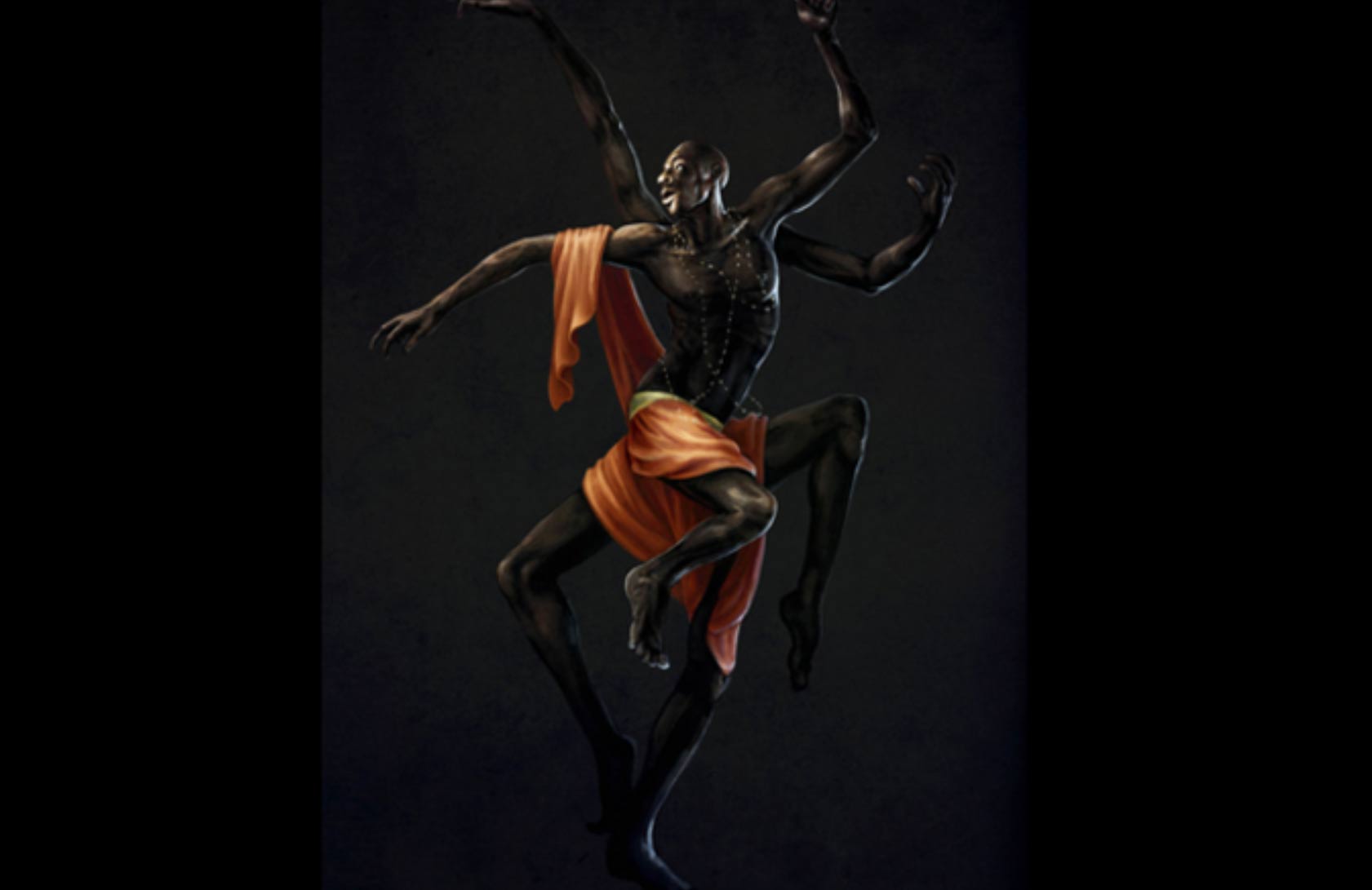Sàngó, also known as Changó or Xangô in Latin America; and as Jakuta or Badé is an Orisha,a deity in Yoruba religion. He is a royal ancestor of the Yoruba as he was the third Alaafin of the Oyo Kingdom prior to his posthumous deification.
Sàngó is a great legend and god. During his lifetime, he was the third Alaafin of the Oyo Empire following Òrànmíyàn and Àjàká, and he is also regarded as the god of thunder and sky. Moreover, Sàngó is as well regarded as the major deity of the religion of the Yoruba of southwestern Nigeria, featuring, also, in the religion of the Edo people of south-eastern Nigeria who refer to him as Esango, and in the religion of the Fon people of Benin, who call him Sogbo or Ebioso.
Like all of the Yoruba gods (orishas), Sàngó is both a deified ancestor and a natural force, both aspects being associated with a cult and a priesthood. Ṣàngó is viewed as the most powerful and feared of the orisha pantheon.

Sàngó's symbol is a double-headed axe, which represents swiftand balanced justice. He is the owner of the Arts of Music, Dance and Entertainment in the Yoruba Culture as well as Bàtá:a double-headed drum. In the Lukumí (Olokun mi which means“my dear one”) religion of the Caribbean, Sàngó is considered the centre point of the religion as he represents the Oyo people of West Africa.
He had three wives, Olorì Oba, his first; Olorì Òsun (Oshun); Olorì Oya. Among all the three wives, he preferred and loved Òsun the most because she was his best cook. According to Professor Mason's Mythological Account of Heroes and Kings, Sàngó brought prosperity to the Oyo kingdom, unlike his peaceful brother Ajaka. He was a powerful and as well a violent ruler.
Ṣàngó is worshiped on the fifth day of the week In Yorubaland, which is named Ojo Jakuta. Ritual worship foods include gúgúrú, bitter cola, àmàlà, and gbègìrì soup. Also, he is worshiped with the Bàtá drum. One important and remarkable thing about this deity is that he is worshiped using red clothing, because during his lifetime he admired red attire.
To anyone who enraged Ṣàngó he usually cast a "thunderstone" to the earth, which creates thunder and lightning. The Ṣàngó god necklaces are composed in varying patterns of red and white beads; usually in groupings of four or six which are his sacred numbers. Rocks created by lightning strikes are venerated by Ṣàngó worshipers; these stones, if found, are maintained at sacred sites and used in rituals. Till the present day, Ṣàngó is called on during coronation ceremonies in Nigeria.

Sàngó And His Wives
Sàngó the god of thunder is believed to have been a great deity and a great man during hislifetime. He had 3 wives which are: Oba, Òsun, Oya.
Òsun, (a river goddess) was his favourite because of her outstanding cooking habit, Oba (another river goddess) who offered Sàngó her ear to eat, was despised and she became theOba River. Lastly, Oya (Sàngó’s third wife) who was made the queen was a crafty woman who stole the secret of Sango’s powerful magic.
In other words, Oba was Sàngó’s first and legitimate wife in the empire, Òsun was his secondwife, then followed by Oya; his third wife, whom he made his queen. Out of jealousy, Òsun played a trick on Oba when she asked Òsun the outstanding secret of her delicious food, and how she managed to keep Sàngó pleased with her meal. Òsun however deceived Oba that if she could cut a piece of her ear and offer it to Sàngó as part of his meal, he would love her the more. Oba was very excited by this information, she ran home to prepare Sàngó's “Àmàlà”, which was his favourite meal during his lifetime. She sliced off her ear and stirred it into Sàngó’s food.

Sàngó, on the contrary, on seeing the ear in his food was infuriated thinking that Oba was trying to poison him. Sàngó then drove her from his house and Oba ran out crying. At the climax, she fell to the ground and turned into a river which is still being worshipped till today. Meanwhile, Oya, on her own part, became the benefactor of matrimony (as “Orisha”) and it is believed that she destroys marriages where either of the partner is abused.
Furthermore, when Sàngó found out that Òsun deceived Oba, he was angry and called Òsunout in the rain, as a result, Òsun turned to water which is being worshipped till today known as Òsun Òsogbo waterfall. This river goddess is generally depicted as the protector, saviour, or nurturer of humanity and as well regarded as the Yoruba goddess of flirtatiousness, sensuality, beauty, and fresh water.
Consequently, Sàngó displayed his magical powers by directing lightning unto his own household killing his wives and children. At the denouement, contrary to beliefs that he hanged himself, Sàngó interred himself in the ground in Ira, becoming deified as the god ofthunder and lightning, and garnering followers till date from the ever-flowing rivers of Africa to the tidal shores of South America and the fine sands of the Caribbean.
Join the Oriire Community
Become a free member to get the monthly roundup, comment on articles and bookmark your favourites





















Share
0 Comments